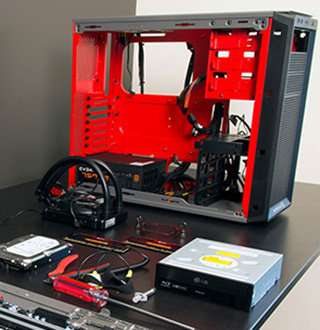How Not To Build A Computer | Self PC Building Tips

There are quite a few PC build guides mushrooming these days. Nowadays, it seems like, with a little money and absolutely no knowledge or research on the subject matter, people are teaching everyone to build gaming PC.
In this brief PC build guide, we provide you with somehow you can be saved from screwing up while building your own PC.
1. Pick the Parts of Your PC
The first step on building your own PC is picking the parts for your PC.
See, when we said building your own PC, we didn’t mean making it from scratch. Don’t try to build it from scratch. But you won’t even know how to, anyway.
So, a normal person would go to the market (online is preferred if they are as lazy as the rest of us) and buy the parts they need. Usually, the parts include:
- Processor
- Motherboard
- RAM
- Power Supply
- Storage (HDDs and SSDs)
- Case
You can find help picking the parts on sites like pcpartspicker.com.
2. Assembling the Parts
There are some very detailed assembling manuals that can be helpful while assembling (You can check out the video below). But beware of half-researched tech articles that are littered all over the internet these days; they will only lead you astray.
Guide to Assembling: Paul's Hardware provides a thorough guide of assembling different parts into the motherboard (published on 18 February 2018)
We will provide you with a few tips on things you should be careful about assembling.
2.1 Know Your Case
Before you start, know your case better; know that the pads on the base of the case are vibration absorbers and not insulating pads to prevent your power supply from short-circuiting. Know what order of assembly your case demands.
2.2 Be Careful of the Order of Assembly
This is a difficult part, believe me. You have to be unusually careful about the order of the assembly, and points of assembly. If your case doesn’t support the installation of the fan afterward, you wouldn’t want to install the radiator before the fan—unless you want to start the whole thing all over again.
And that isn’t even the worst mistakes you can make.
2.3 Make Sure Your RAMs are Spaced Apart
High on the trace of your assembly, you might put your two high-speed RAMs (if you have got two that is) side by side on adjacent slots. Don’t do that, they must be spaced apart.
2.3. Applying the External Paste on top of your IHS is not a Good PC Building Practice
Usually, the processor is provided with a heat sink, but you can be super-cool and use some aftermarket cooling systems. It is absolutely alright, whatever makes you happy. What isn’t alright is applying a third-party thermal past on top of your processor’s heat spread, for so many reasons: a) it looks ugly; b) there might be some kind of adverse reaction that you know nothing about.
3. Enjoy Your High-Performance PC
This is probably the most important part; if it isn't why would you even build a PC. Even if you are only a hardware enthusiast and you built your PC just for the fun of building and not to enjoy its performance, later on, it won't be terribly bad to sit back and see your creation at work.